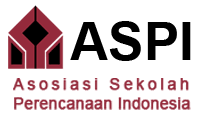Globally Connected Fake Eyelash Industry in Relation to the Increase of Local Income per Capita (Case of Kutasari, Purbalingga Regency)
Abstract
The impact of the global economy on foreign investment in various locations has a profound influence on the growth of local industries, including the fake eyelash industry, thereby stimulating local economic development. The emergence of local industries also brings about changes in the economic structure of local communities. This study aims to determine the extent to which local industries contribute to the rise in per capita income within these communities. To achieve this objective, the research initially identifies the characteristics of the industry and subsequently examines their impact on per capita income growth. The results demonstrate that the industry exhibits favorable conditions in terms of workforce, products, and relationships. Moreover, the industry has a high likelihood of positively influencing the increase in per capita income of local communities. In conclusion, local industries play a significant role in bolstering per capita income and even enhancing other aspects related to the community's quality of life.
Keywords
Full Text:
PDFReferences
Beer, A., & Clower, T. L. (2019). Globalization, Planning and Local Economic Development (1st ed.). Routledge. https://doi.org/10.4324/9781315749624
Chege, S. M., & Wang, D. (2020). Information Technology Innovation and its Impact on Job Creation by SMEs in Developing Countries: An Analysis of the Literature Review. Technology Analysis & Strategic Management, 32(3), 256–271. https://doi.org/10.1080/09537325.2019.1651263
Fahmi, F. Z., McCann, P., & Koster, S. (2017). Creative economy policy in developing countries. Urban Studies, 54(6), 1367–1384. https://www.jstor.org/stable/26151420
Gamage, S. K. N., Ekanayake, E. M. S., Abeyrathne, G., Prasanna, R., Jayasundara, J., & Rajapakshe, P. S. K. (2020). A Review of Global Challenges and Survival Strategies of Small and Medium Enterprises (SMEs). Economies, 8(4). https://doi.org/10.3390/economies8040079
Gu, X. (2014). Creative Industries, Creative Clusters and Cultural Policy in Shanghai BT - Cultural Policies in East Asia: Dynamics between the State, Arts and Creative Industries. In H.-K. Lee & L. Lim (Eds.), Cultural Policies in East Asia (pp. 174–192). Palgrave Macmillan UK. https://doi.org/10.1057/9781137327772_11
Hanan, H., & Hemanto, D. (2020). From clothing to culinary industries: creativity in the making of place. Creative Industries Journal, 13(2), 117–136. https://doi.org/10.1080/17510694.2019.1673121
Harsanto, B., & Permana, C. T. (2020). Sustainability-oriented innovation (SOI) in the cultural village: an actor-network perspective in the case of Laweyan Batik Village. Journal of Cultural Heritage Management and Sustainable Development, 11(3), 297–311. https://doi.org/10.1108/JCHMSD-08-2019-0102
Millard, E. (2017). Still brewing: Fostering sustainable coffee production. World Development Perspectives, 7–8, 32-42. https://doi.org/https://doi.org/10.1016/j.wdp.2017.11.004
Moghayedi, A., Richter, I., Owoade, F. M., Kapanji-Kakoma, K. K., Kaliyadasa, E., Francis, S., & Ekpo, C. (2022). Effects of Urban Smart Farming on Local Economy and Food Production in Urban Areas in African Cities. Sustainability, 14(17). https://doi.org/10.3390/su141710836
Noring, L. (2019). Public asset corporation: A New Vehicle for Urban Regeneration and Infrastructure Finance. Cities, 88, 125–135. https://doi.org/https://doi.org/10.1016/j.cities.2019.01.002
Prabowo, D., & Wijaya, S. (2023). Effect of Industry and Service Sectors on Goods and Services Tax Revenue in The G20: Per Capita Income as a Moderator. Educoretax, 3(4), 423–431. https://doi.org/10.54957/educoretax.v3i4.662
Rahmadhani, E. R., & Herianingrum, S. (2016). Dampak Eksternalitas Positif PT. Petrokimia Gresik terhadap Masyarakat dalam Perspektif Maqashid. Jurnal Ekonomi Syariah Teori dan Terapan, 3(10). https://doi.org/10.20473/vol3iss201610pp782
Sardar, Z., & Nafik, H. R. M. (2016). Kesejahteraan dalam Perspektif Islam pada Karyawan Bank Syariah. Jurnal Ekonomi Syariah Teori Dan Terapan, 3(5). https://doi.org/10.20473/vol3iss20165pp391
Suciadi, M., Purnomo, E. P., & Kasiwi, A. N. (2020). Eksternalitas Positif Tambang Batubara terhadap Kesejahteraan Sosial Ekonomi Masyarakat di Kabupaten Kutai Kartanegara. Jurnal Ilmiah Dinamika Sosial, 4(2), 267. https://doi.org/10.38043/jids.v4i2.2458
Sugiyono. (2013). Metode Penelitian Kuantitatif, Kualitatif, dan R&D. Alfabeta.
Syafiq, F. N., & Haryanti, R. H. (2022). Analisis Stakeholder dalam Upaya Mempertahankan Industri Bulu Mata Palsu Guna Mengantisipasi Pengangguran di Kabupaten Purbalingga. Jurnal Administrasi Publik, 13(1), 46–60. https://doi.org/10.31506/jap.v13i1.11575
Tang, W., & Zhu, J. (2020). Informality and rural industry: Rethinking the impacts of E-Commerce on rural development in China. Journal of Rural Studies, 75, 20–29. https://doi.org/10.1016/j.jrurstud.2020.02.010
World Bank. (2020). GNI per Capita, Atlas Method (Current US$). Data.Worldbank.Org. https://data.worldbank.org/indicator/NY.GNP.PCAP.CD
Yum, S. (2020). The relationship between creative industries and the urban economy in the USA . Creative Industries Journal, 13(2), 95–116. https://doi.org/10.1080/17510694.2019.1668741
Refbacks
- There are currently no refbacks.












